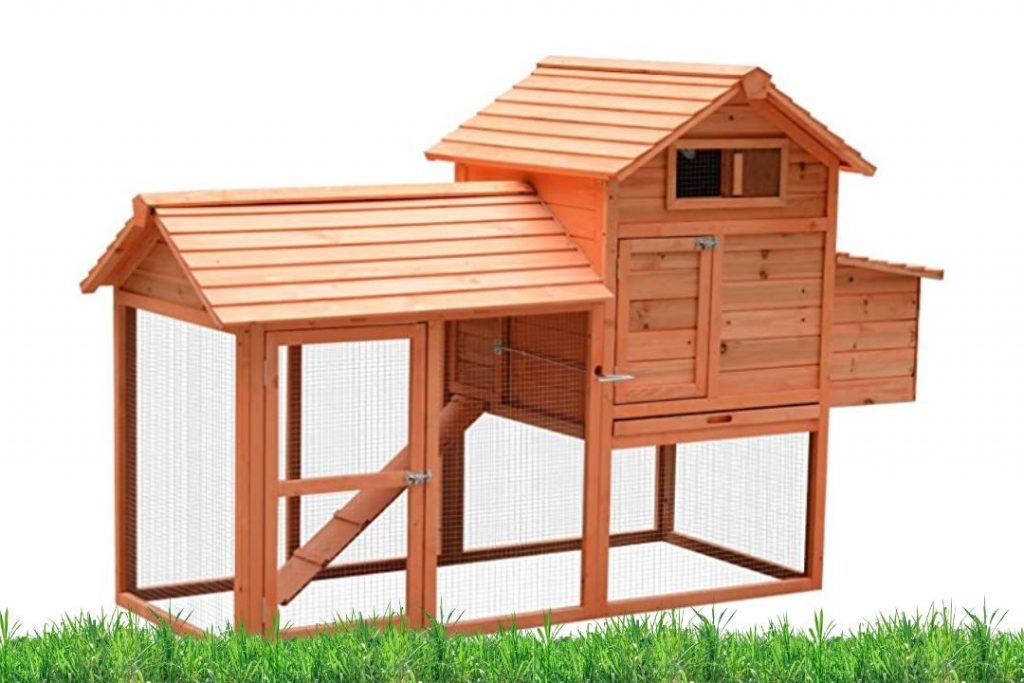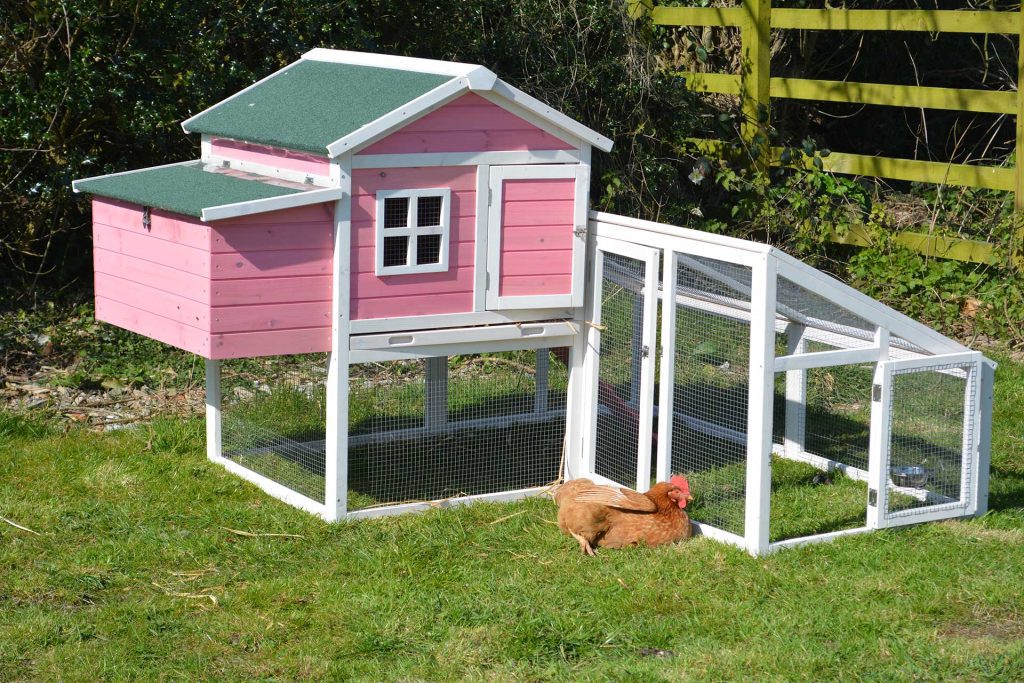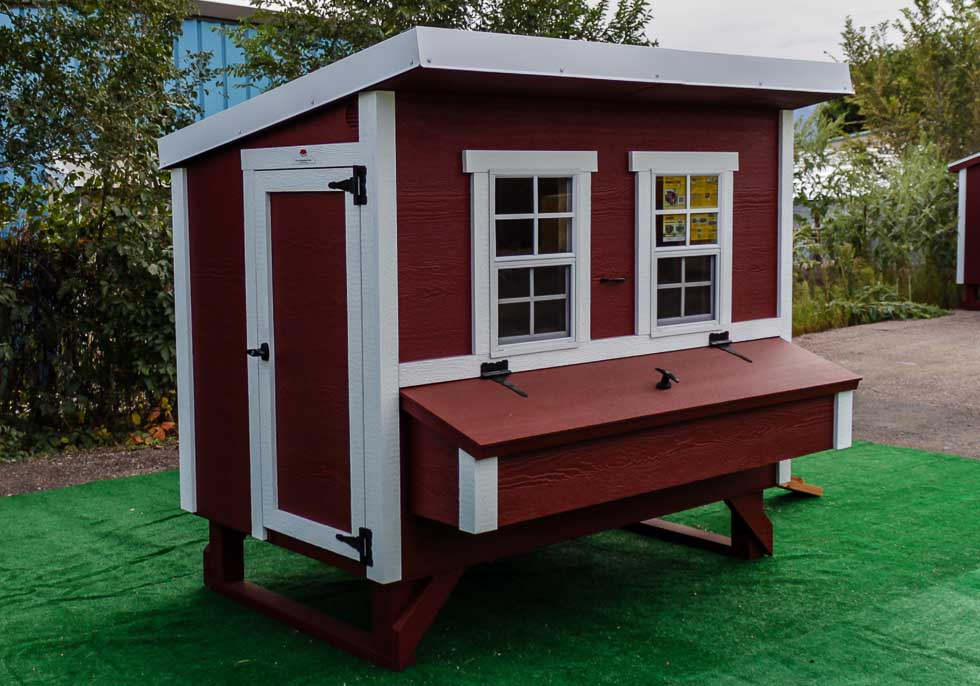Many poultry owners want to make a chicken coop on their own and search for how to build a chicken coop. Building a perfect chicken coop is vital because it’s not only a simple structure, but also it will keep the chicken safe and healthy. So, while building a coop, you should aim to make it such a way that it will save the hens from predators, disease, moisture, etc.
Many beginners often panic about how to build the coop. Well, relax and take a deep breath. This article will explain all the details of building the coop. You require to follow our suggested ways to make the coop. So, let’s s dive into the discussion:
Building Your Own Chicken Coop: The Steps And Processes Involved
Before you start building your chicken coop, check this list!
1. Determine The Size Of The Coop
Determining the coop’s size is very important for building a chicken coop. At least 3 square feet of room is required for each chicken breed if space is available in the outdoor range. However, we recommend you ensure at least 4 square feet per chicken for standard species. So, the simple calculation is if there are eight chickens in the flock, the correct coop size is 32 square feet.
Along with the indoor coop, you should also ensure 4 square feet at the outside range per chicken. In case the outdoor range is unavailable, you must ensure more room for chicken in the room inside. The recommended size per hen without the outdoor range space is 8-10 square feet.
However, a winter coop provides space for the bird inside. Therefore it would be better if you keep that too. Now depending on the breed, the amount of vertical space can vary. Also, determining the vertical space depends on several factors. Those factors are the ideal indoor temperature and door heights.
When fixing the coop size, you need to consider more things like the roosting bars, nesting boxes, Waterer and feeder space, etc. So when you are sketching your coop size, you should consider and include all these. Because for putting all these you also require enough space. Make sure you are not overcrowding your chicken coop. Overcrowding can cause different problems among the flock.
2. Choose The Location For Your Coop
So, before building a chicken coop, the most important job is selecting a location for it. Choosing the perfect place for your chicken cage is crucial. An ideal location is essential to ensure enough protection and coop hygiene.
However, the most general considerations while building a coop are to avoid the mud problem, flooding, and moisture build-up. And therefore, you must choose a high ground to make the coop. You should build an elevated coop if the high ground is unavailable on your property. This type of coop is also effective in keeping the birds dry.
To deter unwanted predators, you should build the coop in a highly trafficked area or close to your home. Also, you can keep your backyard flock safe by building your chicken home away from huge foliage and large plants.
Another crucial thing to consider while selecting the coop’s location is sunlight. Sunlight makes the chicken more capable of laying eggs. Therefore ensure that you are not choosing a shady area to put the coop.
A southern exposure can ensure a significant amount of sunlight and warmth for your chicken. At the same time, placing the coop near a large tree will provide a high canopy to keep the chicken cool in hot weather.
3. Determine What Type Of Materials are Required For Coop
There is no lack of options or materials for building the coop. In fact, some options are better compared to others. But you must carefully consider and select the material type for your need. You can use unfinished and plain Plywood with the shaving’s deep layer for flooring. Plywood is durable and cheap, so it will undoubtedly be your best option.
You can easily cut holes in the Plywood and make windows in the coop to provide enough ventilation to the backyard flock. However, if you choose wood, it’s also a good option. But wood can be the home for mites and can rot. Moreover, sometimes chicken can nail down on the wood’s top. But cleaning and replacing wood is effortless.
4. Make Sure You Have All the Necessary Tools

For building a chicken coop, you will require specific materials and DIY tools. So, before making the cage, ensure you have all the necessary tools. For building a coop, the easiest, fastest, and most available material is wood. While dealing with wood, you should have specific tools in your hand, including the following:
- Screwdriver
- Extension cords
- Electric stand saw
- Spirit level
- Sandpaper
- Measuring tape and pencil
- Hammer
How To Build A Chicken Coop? Step-By-Step Guide
Many new chicken owners or beginners want to know how to make a chicken coop. Well, for them, we are preparing this guide today. To build a chicken coop, you must prepare the ground, pick a specific plan and buy the required materials. Then make the coop roof, add a coop wall, put it on the floor, and do the other necessary things mentioned in this guide.
Even if you don’t have the DIY experience, you will surely be able to build a coop following our step-by-step guide below:
1. Prepare The Ground
Firstly you must prepare the ground for building the coop. For example, immediately after heavy rain, you will not be able to build your chicken coop. Preparing the ground will help you to make a strong foundation. When you build the cage, remove the ground’s sticks and rocks as much as possible. Also, consider cutting the overhanging branches.
All these large and overhanging branches can be the harbor of predators, and they can quickly attack your hens. Also, if there are any woodpiles, sheds, or shady hiding spots, you should consider removing and relocating them as well.
2. Pick Your Plan
When you start to build a coop for your hen flock, you should first pick a plan that includes all the necessary to-do lists. Several easy-to-understand coop plans are available for beginners, from which you can select the best one. While attempting to build a chicken coop for the first time, it’s better to pick a less complicated plan.
3. Buy The Materials For Building Coop
What are the right materials for building a coop, the list will differ based on experiences and opinions. However, for starting to build a coop in general, you require the following materials:
- Chickens (you can buy chicken from the online or local hatchery)
- Hay
- Nesting boxes
- Galvanized wire
- Prefab coop
- Roosting bar
4. Build The Coop Frame
For making a coop, first, you need to choose a design. After selecting a particular design, you should step forward to build the coop frame. The coop’s structure is called a frame. Even though the coop frame size can vary. But generally, you can follow the pattern below for making the coop.
| Name | Coop Frame Size & QTY |
| Vertical Batten | 6×42.5”x3”x2” |
| Side Batten | 4”x72”x3”x2” |
After cutting the vertical and side battens, using the screws, fix them together. Ensure from the vertical battens 6 and 1, the vertical battens 5 and 2 are fixed by 21″. Also, ensure the side battens are in parallel condition.
However, to make a perfect coop, place the side of the frame on a flat surface and ensure it is square. And then measure across the frame’s diagonal. Measure top left to the bottom right and top right to bottom left or both diagonals. And ensure the length of the diagonal match ideally. After joining the sides together, you have the following size and format.
Now you need to fix each joint’s four connecting battens together to join the sides. From the side, battens screw through the connecting battens. Finally, on the vertical battens 2, 3, 4 & 5’s outside, fix the four lumber battens approximately 19.5″ from your coop’s floor.
5. Build The Coop’s Roof
After completing your chicken coop’s frame, you must build the roof. Now start the process by making the roof trusses and fitting them. First, take two different roof battens or trusses and screw them together. At a 45-degree angle, screw the roof trusses together and create the triangles without any bases.
Now directly above the coop’s vertical battens, screw all three trusses into the coop frame. Then fix the ridge rail. However, the roof structure will only be completed when you screw the small and large ridge rails between the roof trusses. Now finally, into the ridge rails, screw through the roof trusses.
6. Add The Coop Walls
As for the coop walls, you need to add the panels to the frame. You can cut the plywood at lumber stores or home improvement. Securely fasten the panels to the frame and ensure there are no gaps to let in the drafts or predators.
Also, at this time, you need to cut your vents. Cutting the vents is necessary for preventing heatstroke and respiratory diseases. Using the hardware mesh, cover them. Also, ensure that you will be able to close the vents under the perches in winter.
7. Put It On The Floor
In the long run, adding the wooden floor is well worth it. The wooden floor will ensure a drier and much safe coop. However, you don’t have to put an even floor but ensure that it is on a level with well-secured boards. The leveled floor won’t rock back and forth.
However, while choosing the wood, be careful and don’t choose one with large holes or knots. Because the predators will be able to enter the coop through the large hole or knots, so be careful of it. Anyway, against the burrowers, you can ensure the additional protective measure by stringing the hardware mesh under the coop’s floorboards.
8. Add The Doors
First off, cut the wood, to install the doors on your chicken coop. For the door, you can use a medium-density well, finished fiberboard. The piece’s size will depend on the chicken coop’s chosen height. Each door should be tall enough to open correctly.
Now install the door frame. At each side of the door opening, screw a 2×2. Also, screw at the top. Screwing the door’s hinges will give you a sturdy place. Afterward, attach the front doors. At the front door, screw in two hinges.
You should screw one about 4 inches from the door’s top and the other four inches from the door’s bottom. However, depending on your chicken coop size or height, you may need a third hinge directly in the middle.
For the other two openings, repeat the same process. You can use the exact measurements for your coop’s back, just like the front measurement. But for your coop’s side door, you need to take the new measurements.
Finally, add closures to your coop. However, the brass hook catch is an efficient yet inexpensive closure. But you can use any type of closure, as anything will work. Whatever kind of closure you use, ensure it will not be opened easily by common predators like skunks or dogs.
9. Raising The Coop
Raising the coop is not mandatory, but it’s necessary. So, if you do it, it will be better. The raised chicken coop ensures added protection for your flock from predators. Also, the chicken will remain dry during the snow or rain due to the raised coop. To raise the chicken coop, you first need to add legs. For the legs, you can use four 2x4s.
On your chicken coop’s bottom corner, attach the legs to the 2x4s using the beefy screws. The next step is to build a ladder. To make a ladder use the 2x2s to the 2×4. The chicken will easily be able to use this ladder. Moreover, for the predators, this ladder size is too narrow, so they will not be able to use it. Using a small hinge, you can easily attach the ladder.
10. Build The Nesting Boxes & Perches
Without the roosting perches and nesting boxes, no chicken coop becomes complete. Therefore you must add these also while building the coop. Inside the coop, you can add the sturdy wicker basket properly padded with the straw. The chicken will consider it a cozy place for laying eggs.
On the other hand, for sleeping, you can use the wood closet rod. It will act as a perch. However, you can make egg collecting much more fun by hanging colorful paintings on the wall. Chickens don’t require much furniture. Only perches and nesting boxes are enough for them. The birds will securely lay eggs in the nesting boxes. So fill the box with soft bedding. For three hens, you can add a nesting box.
11. Build The Run Frame
The run frame only needs to support the hardware mesh, chicken wire, and your coop’s other fencing, not the roof or solid walls. Therefore it won’t be perfect and strong as the coop frame. But you must ensure that it is well-constructed. A solid run frame will protect the chicken from predators and secure the coop’s fencing.
Frequently Asked Questions
Can You Have a Chicken Coop in a Residential Area?
The typical law is that the chicken coop should be placed at some distance from the residential area. The distance should minimum be 10 feet, and the maximum should be 150 feet.
Is It Cheaper to Build a Chicken Coop or Buy One?
Following the DIY method, building a chicken coop on your own is cheaper than buying the coop. But for building the coop, you need to know how to build it.
Where Is the Best Place to Build a Chicken Coop?
High ground is the best place for building a chicken coop. Building the coop on high ground will help you avoid mud problems, flooding, and any moisture and water buildup.
Why Are Chicken Coops Built off the Ground?
You should build the chicken coop off the ground so that from underneath, any predator or snakes can’t enter the coop.
In Which Direction Should the Chicken Coop Face?
Which direction you should place the chicken coop depends on the owner’s attitude. But according to many poultry farmers facing north, you should build the coop.
Final Thoughts
So, we are at the end of this article, and hopefully, you know how to build a chicken coop. Building a chicken coop is easy if you follow our above-mentioned suggested approach. Build a perfect coop and ensure the flock will remain safe in the coop.
We have already guided you with all the details. Still, if you need help, comment in the comment box, and soon we will reply.
Raising Chickens 101: A Beginner’s Guide
Get started in chicken raising with our expert-approved guide. From building a coop to hatching eggs, you’ll learn all the essential information you need to know. Topics include selecting breeds, caring for chicks, increasing egg production, and more. We also cover chicken feeds, behavior, disease prevention, and essential vitamins and minerals. Follow this guide for a successful and fulfilling experience.
Want to learn more about chicken raising? Check out our beginner’s guide below for even more tips and information:
- Selecting the Right Backyard Chicken Breeds
- Incubating and Hatching Chicken Eggs
- Raising Baby Chicks
- Caring for Pullets
- Increasing Egg Production
- Types of Chicken Feeds
- Choosing the Best Chicken Feed
- Understanding Chicken Behavior
- Recognizing and Treating Chicken Diseases
- Providing Essential Vitamins and Minerals



